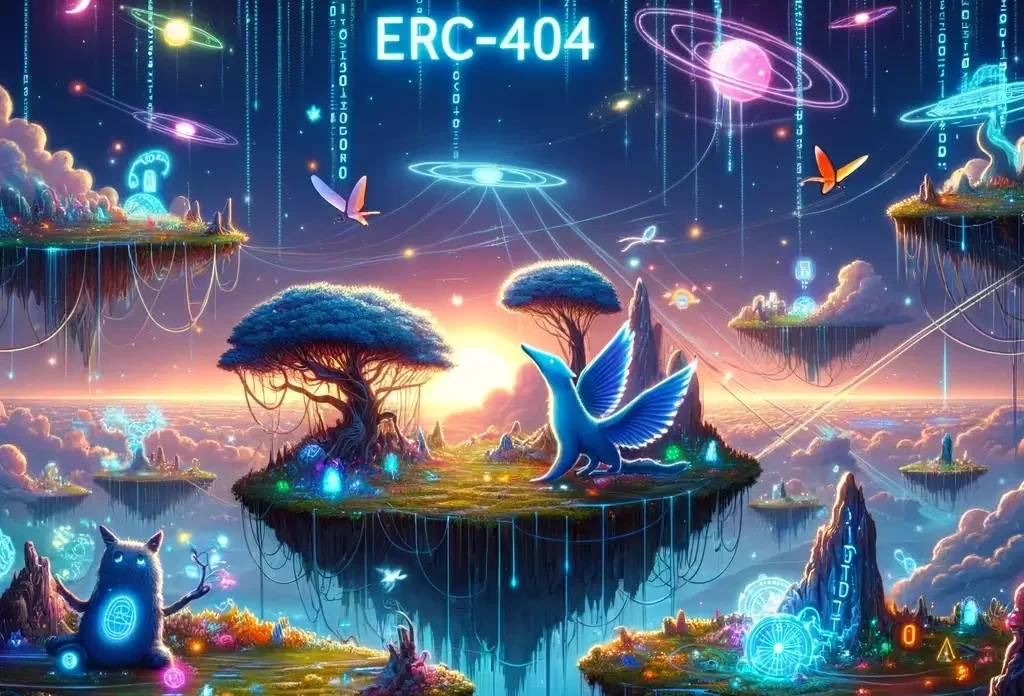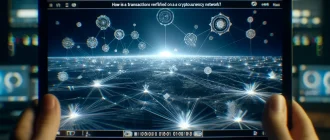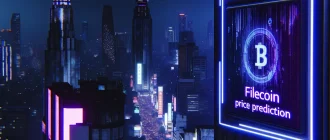ERC-404 introduces semi-fungible tokens to the Ethereum ecosystem, delivering a unique combination of interchangeable and unique asset traits. This guide demystifies ERC404, detailing its function, implications for the various NFT marketplaces, and potential role in Ethereum’s future.
Key Takeaways
- ERC-404 is an experimental Ethereum token standard combining ERC-20 (fungible) features and ERC-721 (non-fungible) to create semi-fungible tokens, offering uniqueness and divisibility for digital art and real estate assets.
- The mechanics of ERC-404 facilitate dynamic minting and burning processes linked to fractional NFT trades, creating a flexible and adaptable standard that supports a wide range of applications and makes digital asset ownership more inclusive.
- The future of ERC-404 depends on its formal recognition via the Ethereum Improvement Proposal process, addressing security concerns, and the potential to open new markets by democratizing ownership of high-value digital assets.
Demystifying ERC-404: The Essence of Semi-Fungible Tokens
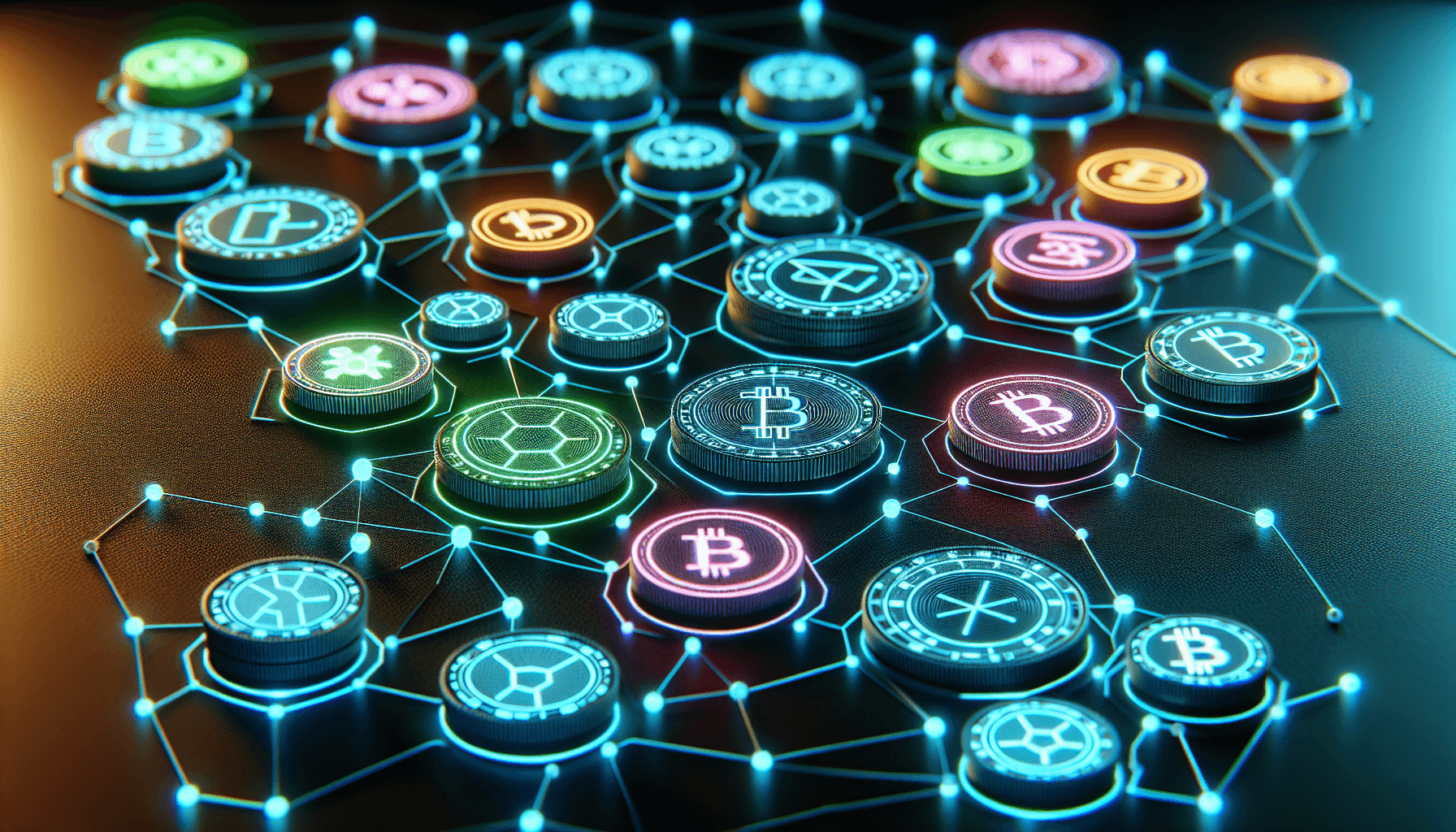
ERC-404, an experimental token standard, unifies the properties of ERC-20 (fungible) and ERC-721 (non-fungible) token standards, giving rise to a novel category of semi-fungible digital assets. By blending the homogeneity of fungible tokens with the uniqueness of non-fungible tokens, ERC-404 enhances the uniqueness and scarcity of financial holdings in DeFi systems, potentially revolutionizing the world of digital assets.
The goal of ERC404 is to enable more effective native fractionalization of NFTs, providing enhanced functionality. This feature enhances liquidity and trading engagement on NFT platforms, paving the way for more dynamic and active markets.
ERC-404, therefore, redefines the concept of digital asset ownership, making it more accessible and inclusive.
Key Features of ERC 404
The beauty of ERC-404 lies in its unique features. By merging the characteristics of fungible ERC-20 tokens and non-fungible ERC-721 tokens, ERC-404 offers a new kind of asset representation that is both unique and divisible. While divisible into smaller parts, ERC-404 tokens can represent unique digital assets, like artwork or digital real estate.
The attribute of fractional ownership renders ERC-404 particularly enticing in the various NFT marketplaces’ market cap. With ERC-404 tokens, you can:
- Divide an NFT into smaller, liquid, and tradable parts
- Enhance the overall liquidity and accessibility of the NFT market
- Allow for liquid markets around a project’s tokens and corresponding NFT collections.
ERC-404 and Digital Art
Art, a fundamental aspect of human expression, has seen its sphere of creativity grow exponentially with the emergence and creation of art. Digital artwork exchange, represented by ERC-404 tokens, plays a significant role in this domain by:
- Democratizing access to high-priced artwork
- Enabling multiple individuals to own a piece of art collectively
- Transforming the way we interact with and invest in digital art.
This new engagement form in the digital art community fosters more dynamic and innovative monetization strategies. ERC404 enhances market liquidity and drives new NFT creation by allowing partial ownership of artwork to be traded. This boosts adoption across sectors and significantly benefits the digital art domain by combining artwork uniqueness and fractional ownership benefits.
The Mechanics Behind ERC 404 Tokens

To grasp ERC-404, one needs to penetrate the core of its mechanics. ERC-404 tokens utilize dynamic minting and burning processes that are activated during the trading of fractional tokens. This dynamic nature of ERC-404 creates a flexible and adaptable token standard that can meet various needs.
When fractional tokens of an NFT are traded on the ERC-404 standard, it results in the corresponding minting or burning of the underlying single NFT token. This allows for creating fractionalized NFT collections that can be bought and sold on marketplaces, extending the NFT trading possibilities beyond what is available with traditional NFTs governed by the ERC-721 standard. As a result, both NFT transactions and trading transactions become more versatile and accessible to a broader range of collectors and investors.
Smart Contracts and ERC-404
Smart contracts form the blockchain backbone of ERC-404. These digital contracts manage ERC-404 tokens by handling the intricate aspects of token ownership and transaction processes. They provide a robust framework for exchange that integrates both tokens and NFT ownership, allowing for innovative digital asset risk management methods.
ERC-404 employs an innovative contract-based minting process that uses a first-minted function, empowering a MINTER_ROLE to create tokens on different blockchains. This facilitates cross-chain interoperability, making ERC-404 a versatile and adaptable standard. These smart contracts are pivotal for securing and efficiently operating ERC404 tokens, ensuring protocol adherence, and preventing unauthorized actions.
The Minting Process
What exactly is the appearance of the minting process in ERC-404? The minting of an ERC-404 token begins when a wallet holds a complete ERC-404 token. This signifies the start of creating a new token within this standard. With each sale of an ERC-404 token, the linked wallet NFT is automatically burned as part of the wallet transaction process, maintaining a dynamic balance between the token and the NFT.
ERC-404 tokens allow for fractional ownership of NFTs. Here’s how it works:
- Tokens are linked to an NFT.
- Buying or selling fractions involves the minting or burning of these tokens.
- These fractionalized tokens can be owned and traded on Ethereum-based platforms like Uniswap.
This first token demonstrates the standard’s flexibility in facilitating transactions for token holders, similar to ERC-20 tokens.
Burning for Balance
Burning is as vital to ERC-404 as minting. When a fraction of a token is sold, the token and associated NFT are burned to create and maintain an accurate representation of the remaining token fraction’s ownership of the linked NFT. This ensures the token’s integrity and its linked NFT are preserved throughout the transaction process.
Once a wallet accumulates enough fractions of fractionalized nfts of the fractionalized Nfts of tokens to comprise a whole, the ERC-404 protocol automatically mints a new NFT.
This dynamic balance between the fractional tokens and the associated NFT underscores the adaptability and flexibility of ERC-404, enhancing its potential for a wide range of applications.
Comparing Token Standards: ERC404 vs. Others
A comparison with other token standards is necessary to truly understand the distinctiveness and enhanced functionality of ERC-404. ERC404 is an experimental token standard. It combines elements of token standards ERC-20 and ERC-721 to introduce semi-fungible tokens. Unlike token standards, ERC-20’s nonfungible token tokens, which are identical and interchangeable, and ERC-721’s non-fungible tokens, which are unique and not interchangeable, ERC-404 merges these concepts, allowing for uniqueness and partial interchangeability.
However, ERC-404 faces competition from standards like DN-404, a novel standard that claims to offer more efficient compliance with ERC-20 and ERC-721 standards. Despite criticism for using the ‘ERC’ name without official recognition, ERC-404’s emphasis on fractional ownership presents a compelling solution to the NFT market.
From Fungible to Non-Fungible: A Spectrum

The digital assets universe, including digital tokens, can be envisioned as a spectrum from a fungible token to a non-fungible token standard. Fungible tokens, exemplified by the ERC-20 standard, are ideal for wide-scale trading because each fungible token is identical, making them interchangeable and divisible. On the other hand, non-fungible tokens, represented by the ERC-721 standard, offer a unique ownership experience for each token due to their inseparable and distinguishable nature.
ERC-404 occupies a unique position on this spectrum. By blending fungible tokens’ uniformity with non-fungible tokens’ distinctiveness, ERC-404 creates semi-fungible tokens that adapt to various use cases. This creates a new category of digital assets that combines the best of both worlds, offering exciting possibilities in the digital assets space.
ERC 404’s Place in Decentralized Finance (DeFi)
With Decentralized Finance (DeFi) burgeoning in the blockchain arena, ERC-404 is poised to play a considerable part. The fractional NFT ownership enabled by ERC-404 could potentially open new avenues for liquidity provision in DeFi. This innovative application helps address liquidity issues related to traditional NFTs, making ERC404 an attractive addition to the DeFi landscape.
ERC-404 also allows multiple wallets to own a single NFT directly, which could be tokenized for further financial activities, thus enhancing liquidity in the market. ERC-404 lays down a foundation for emergent economies in the metaverse, potentially revolutionizing financial products and markets within DeFi by underpinning the trade of provably scarce digital assets.
Pioneering Projects: Who Is Leveraging ERC-404?
Several trailblazing projects are harnessing the potential of ERC-404 as the digital asset landscape evolves. Developers actively employ the ERC-404 token standard in their NFT projects, showcasing its potential in various use cases within the Ethereum blockchain NFT space.
Projects like:
- Pandora
- DeFrogs
- Rug
- Froggy Friends
- Crystal
- 404 Bakery
- Troves
- EtherRock404
- Pet the Dog
- Anon
- YES
- Monarch
They are leveraging ERC-404 for their operations. These early adopters span a variety of use cases within the NFT space, including collectibles, games, and digital platforms. These projects have showcased ERC-404’s potential and have prompted a positive market response in NFTs.
Virtual Real Estate and ERC 404
The realm of virtual real estate is an exciting frontier for ERC-404. Just as it has disrupted the world of digital art, ERC-404 is poised to revolutionize how we interact with and invest in virtual real estate. By enabling fractional ownership of high-value assets, ERC404 makes these assets more accessible to a broader investor base. This democratization of asset ownership is particularly relevant in virtual real estate, where high-value assets are often out of reach for individual investors.
With ERC-404, multiple individuals can own a piece of virtual real estate, transforming how we interact with and invest in this burgeoning space.
ERC-404 in the Gaming Industry
Gaming is another domain where ERC-404 holds immense potential. In-game items and collectibles can be enhanced by ERC-404, adding a unique layer to the gaming experience. By incorporating randomization into destroying and reminting gaming NFTs, ERC-404 can create diverse outcomes for in-game items, adding an element of surprise, risk, and excitement to the gaming experience.
While specific examples of ERC-404 use in the gaming industry for in-game items and collectibles are currently not found, this highlights the standard’s growth potential and untapped opportunities in the gaming industry.
The Challenges and Risks of ERC 404 Adoption
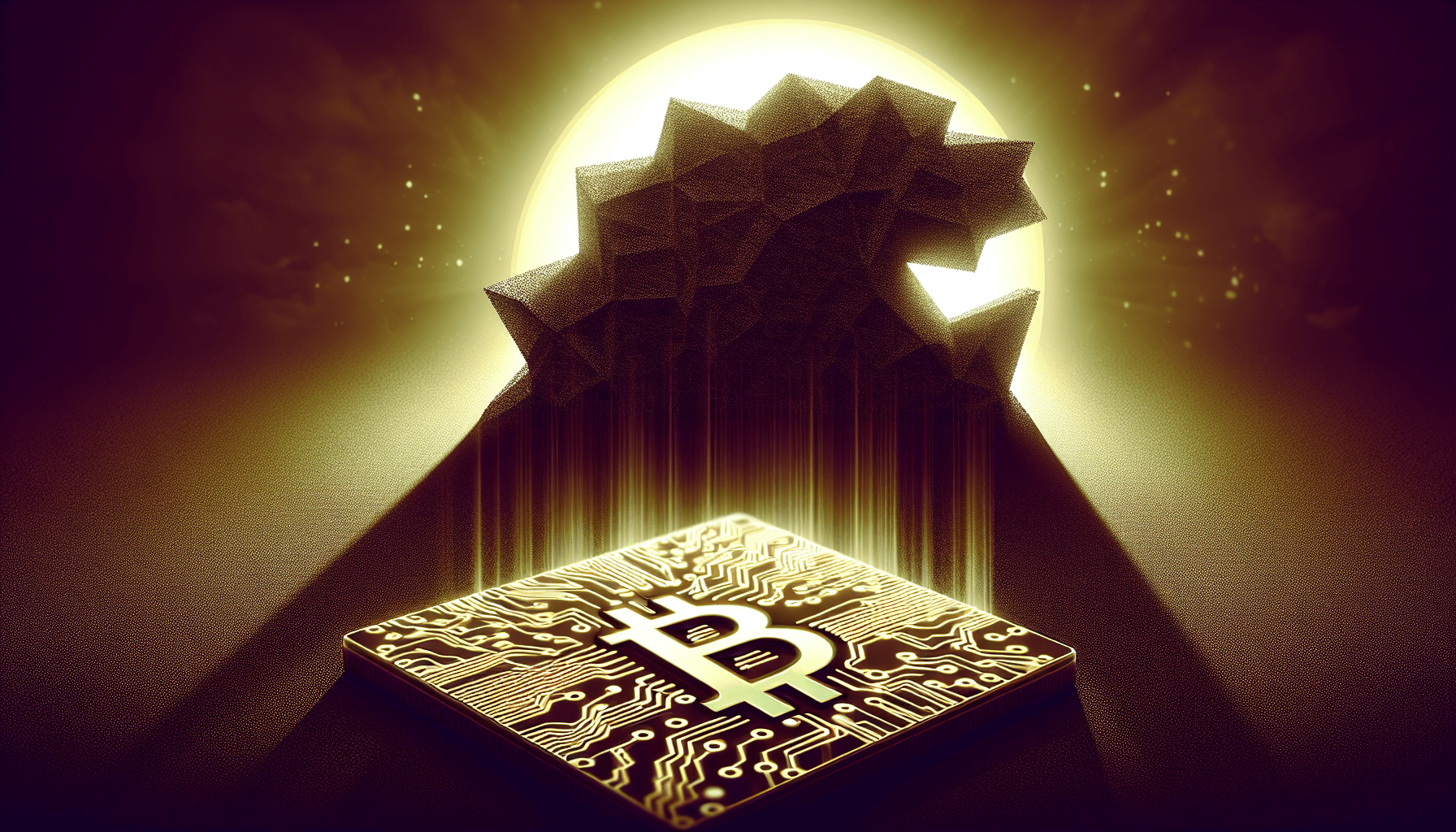
While ERC-404 presents thrilling opportunities, its adoption comes with challenges. The technical complexities associated with ERC-404, such as the difficulty of integrating with existing platforms and wallets and potential inefficiencies and vulnerabilities identified in certain edge cases, hinder its widespread adoption.
Moreover, the experimental status of ERC-404 means that it lacks formal audits, presenting considerable risks to the security and integrity of the protocol. This makes prospective adopters wary, as it is not implemented as robustly as they might prefer, presenting an obstacle to broad acceptance.
Security Concerns and the Need for Audits
Security concerns tied to blockchain and ERC-404 pose a substantial hurdle to its adoption. As an experimental token standard on the Ethereum blockchain, ERC-404 is yet to be officially accepted due to the lack of a required external audit. This lack of audit presents considerable risks to the security and integrity of the blockchain protocol, making prospective adopters wary.
Therefore, addressing these security concerns and conducting formal audits is crucial for robustly achieving widespread acceptance and adoption of ERC404.
The Liquidity Question
The issue of liquidity is another obstacle confronting ERC-404. While ERC-404 tokens enable fractional ownership of NFTs, facilitating the trading of portions of an artwork, high transaction fees associated with trading these tokens can challenge their liquidity. High transaction fees make transactions more expensive, potentially limiting the attractiveness of ERC-404 tokens.
Moreover, a recent surge in the popularity of these tokens has led users to an increase in Ethereum gas fees, further contributing to concerns over the long-term utility and liquidity.
The Future Path of ERC-404 in the Ethereum Ecosystem
ERC-404’s future hinges on experimental standards gaining recognition through the Ethereum Improvement Proposal process and its potential to foster new markets and opportunities. ERC-404 developers are actively working towards proposing and achieving approval for the experimental standard within the Ethereum ecosystem, which will be a significant milestone on its path to widespread adoption.
The Role of Ethereum Improvement Proposals
ERC-404’s path to recognition traverses through the Ethereum Improvement Proposal process. Developers of ERC-404 are actively working to achieve official recognition of the token standard through this process, similar to how ERC-20 and ERC-721 token standards were established through their respective EIPs. Due to the new token standard’s experimental and unofficial nature, the minting process for ERC404 tokens is part of the elements formalized for the Ethereum Improvement Proposal.
Though the process of achieving an official EIP can be extensive and meticulous, there is a commitment from the ERC-404 development team to institute one. The successful recognition of ERC-404 through an official EIP could have significant implications for its integration and usage within the Ethereum ecosystem, paving the way for its widespread acceptance and adoption.
Potential for New Possibilities and Markets
ERC-404 possesses immense potential to generate new possibilities and markets. By enabling high-value assets to be fractionally owned first token only, ERC-404 opens up novel market opportunities. This unique first token-only standard structure enables a broader investor base to access high-value assets, creating more liquid markets for project tokens and their paired NFT collections.
As such, ERC-404 promises to revolutionize the digital assets space, creating new possibilities and previously unimaginable markets, especially within blockchain networks.
Summary
In conclusion, ERC-404 represents a significant leap forward in digital assets. By blending fungible tokens’ uniformity with non-fungible tokens’ uniqueness, ERC-404 introduces a new category of semi-fungible tokens that adapt to various use cases. Despite the challenges and risks associated with its adoption, the potential of ERC-404 to revolutionize the digital assets space is immense. As it continues gaining recognition and acceptance, ERC-404 is poised to redefine how we interact with and invest in digital assets, creating a new realm of possibilities in the digital world.
Based on the information gathered from the sources, here is a detailed table summarizing the known ERC-404 tokens, their names, and distinctive features. This table reflects the projects mentioned as adopting the ERC 404 standard, focusing on their unique aspects and market performance where applicable. It’s important to note that the ERC-404 standard is experimental, and the projects listed are among the first to explore its possibilities.
| Token Name | Description | Distinctive Features |
|---|---|---|
| Pandora | Pandora is the inaugural project utilizing the ERC-404 standard, featuring a collection of 10,000 avatars known as “replicants.” | It bridges the gap between fungible and non-fungible tokens by offering each token holder a unique NFT (Replicant) minted or burned upon buying or selling the token. |
| DeFrogs | A project similar to Pandora focuses on a frog-themed collection. | Follows the ERC-404 standard to provide token holders with unique NFTs, emphasizing liquidity and fractional ownership. |
| Monkees | Another early adopter of the ERC-404 standard, Monkees, focuses on monkey-themed PFPs. | He is known for his rapid price increase post-launch, integrating ERC-20 liquidity with ERC-721 uniqueness. |
Please note the ERC-404 standard allows for innovative tokenomics models, including programmable scarcity and native liquidity mechanisms, making these tokens distinct from traditional NFTs or fungible tokens. These projects’ specific implementations of ERC-404 aim to explore new possibilities in trading, ownership, and value transfer within the Ethereum ecosystem.
Given the experimental nature of ERC404, it’s essential to approach investments cautiously. The standard has not undergone formal auditing processes, posing security and compatibility risks. Keep an eye on developments within these projects and potential new entries into the ERC 404 space for a more comprehensive understanding of its impact and evolution.
Top ERC-404 coins by market capitalization
| Rank | Name | Market Cap | Price | 24h Change | 7d Change | Volume(24h) | Circulating Supply |
|---|---|---|---|---|---|---|---|
| 1 | Pandora (PANDORA) | $188.82M | $18,882.46 | 3.76% | 19.66% | $42,728,626 | 10,000 PANDORA |
| 2 | Asterix Labs (ASTX) | $9.97M | $996.76 | 24.41% | 27.24% | $7,008,252 | 10,000 ASTX |
| 3 | DeFrogs (DEFROGS) | $5.84M | $584.13 | 42.33% | 78.63% | $4,292,679 | 10,000 DEFROGS |
| 4 | 404Blocks (404BLOCKS) | $490,275 | $1,213.55 | 37.92% | 82.25% | $631,705 | 404 404BLOCKS |
| 5 | YES (YES) | $1.49M | $14.88 | 15.24% | 75.45% | $594,508 | 100,000 YES |
| 6 | Rugged Art (RUG) | $2.14M | $213.70 | 11.51% | 71.99% | $392,525 | 10,000 RUG |
| 7 | Anon (ANON) | $971,878 | $2,761.02 | 9.44% | 74.64% | $376,006 | 352 ANON |
| 8 | Ethereans OS | $10.26M | $8.77 | 11.00% | 34.81% | $235,503 | 1,170,000 OS |
| 9 | LONGTOTEM (LONG) | $842,815 | $0.001248 | 7.91% | 62.99% | $174,862 | 675,120,000 LONG |
This table is based on data available as of the latest update and is subject to change with market fluctuations. For current information, refer directly to sources like CoinMarketCap and CoinGeko.
Frequently Asked Questions
What is ERC-404?
ERC-404 is an experimental token standard on the Ethereum blockchain that combines features of a fungible token standard and non-fungible tokens, introducing a new type of semi-fungible digital assets.
How does ERC-404 work?
ERC-404 tokens use dynamic minting, and burning processes triggered when trading fractional tokens, resulting in a flexible and adaptable token standard. This allows the token to meet diverse needs and market conditions.
What are the potential uses of ERC-404 in the digital art and gaming industry?
ERC-404 can democratize access to high-priced digital artwork and enhance in-game items and collectibles by incorporating randomization into destroying and reminting gaming NFTs. This can open up new opportunities for ownership and creativity in the art and gaming industry.
What challenges does ERC-404 face?
ERC-404 faces technical complexities, integration issues with existing platforms and wallets, potential inefficiencies, vulnerabilities, high transaction fees, and a lack of formal audits in a robust manner, which pose security risks. These factors hinder its adoption.
What is the future of ERC-404?
The future of ERC-404 hinges on its recognition through the Ethereum Improvement Proposal process and the potential to create new markets and open market possibilities. Developers are actively working to achieve approval for the new standard from within the Ethereum ecosystem, a significant milestone on its path to widespread adoption.
Disclaimer: The content on this site should not be considered investment advice. Investing is speculative. When investing, your capital is at risk.

